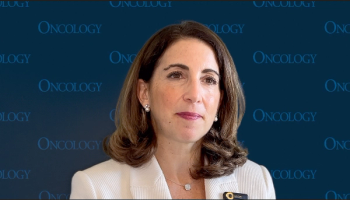
Biosimilar for HER2-Positive Breast Cancer Equivalent to Trastuzumab
A biosimilar to trastuzumab known as CT-P6 showed equivalent efficacy and similar toxicity to the original agent in patients with HER2-positive breast cancer.
A biosimilar to trastuzumab known as CT-P6 showed equivalent efficacy and similar toxicity to the original agent in a randomized phase III trial of patients with HER2-positive early-stage breast cancer.
Though trastuzumab now offers an effective option in this patient population, “the high costs associated with trastuzumab place a burden on healthcare systems and limit global access to the drug,” wrote study authors led by Francisco J. Esteva, MD, PhD, of the New York University Langone Medical Center. “These cost-related barriers can be addressed, at least in part, by introduction of biosimilars.”
Preclinical work showed CT-P6 to be biologically similar to reference trastuzumab in terms of HER2-binding affinity, antiproliferative activity, and other parameters, and early clinical studies again suggested the agents may work similarly. The new trial was a randomized, double-blind, phase III equivalence trial, including 549 women with stage I–IIIa operable HER2-positive breast cancer; the results were
Patient characteristics were well matched between the CT-P6 group (271 patients) and the reference trastuzumab group (278 patients), with a median age in both groups of 53 years; most patients had an ECOG performance status score of 0 (88% with CT-P6, 90% with reference trastuzumab).
The primary endpoint of pathologic complete response (pCR) was similar between the two groups, at a rate of 46.8% with CT-P6 and 50.4% with reference trastuzumab. The 95% CI of the estimated treatment outcome difference was within the pre-established equivalence margin for the biosimilar; the risk ratio for CT-P6 was 0.93 (95% CI, 0.78–1.11).
Results were also similar for breast pCR (51.6% with CT-P6 vs 55.1% with trastuzumab) and for pCR without ductal carcinoma in situ (39.9% vs 41.4%). There were no “notable” differences with regard to the pharmacokinetics of the drugs during treatment.
Toxicity was also similar between the two groups. Most patients in the study reported at least one treatment-emergent adverse event (94% with CT-P6 and 95% with reference trastuzumab); most were grade 1/2 events. Nineteen CT-P6 patients (7%) had a treatment-emergent serious adverse event, compared with 22 (8%) trastuzumab patients.
Treatment-related cardiac disorders occurred in 6% of patients in both groups. Treatment-related infections occurred in 4% of both groups, and treatment-related infusion-related reactions occurred in 5% of both groups.
“The results of this randomized, double-blind, active-controlled trial substantiate the therapeutic equivalence of CT-P6 and reference trastuzumab using two different predefined equivalence margins,” the authors concluded.
Newsletter
Stay up to date on recent advances in the multidisciplinary approach to cancer.


















































































